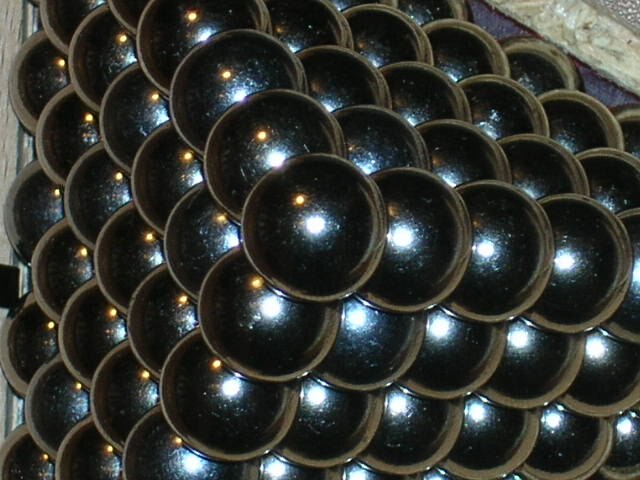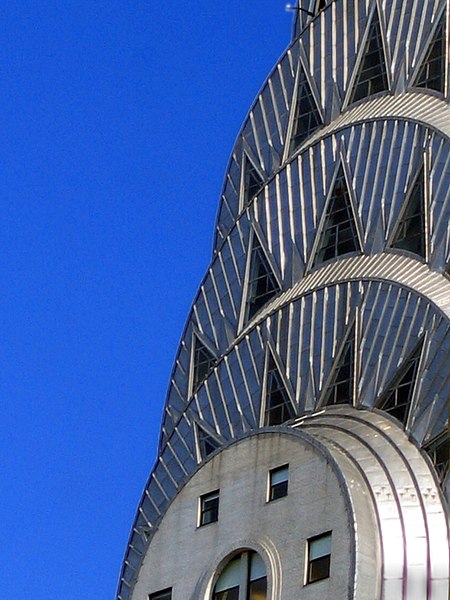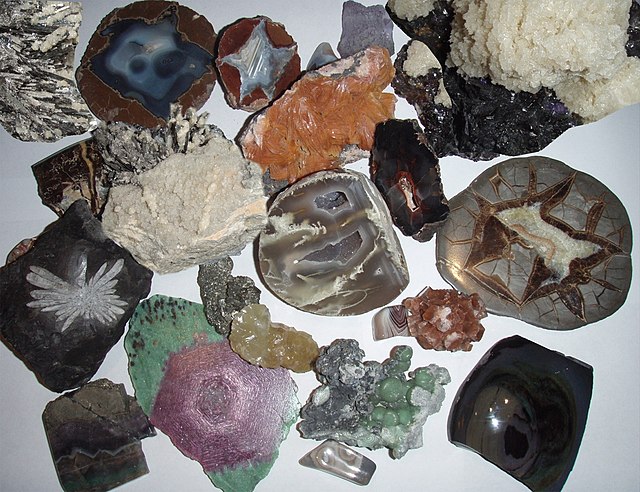Piezoelectricity is the electric charge that accumulates in certain solid materials—such as crystals, certain ceramics, and biological matter such as bone, DNA, and various proteins—in response to applied mechanical stress. The word piezoelectricity means electricity resulting from pressure and latent heat. It is derived from Ancient Greek πιέζω (piézō) 'to squeeze or press', and ἤλεκτρον (ḗlektron) 'amber'. The German form of the word (Piezoelektricität) was coined in 1881 by the German physicist Wilhelm Gottlieb Hankel; the English word was coined in 1883.
Piezoelectric balance presented by Pierre Curie to Lord Kelvin, Hunterian Museum, Glasgow
View of piezo crystal in the top of a Curie compensator in the Museum of Scotland.
Piezoelectric disk used as a guitar pickup
Many rocket-propelled grenades used a piezoelectric fuse. Pictured, a Russian RPG-7
Solid is one of the four fundamental states of matter along with liquid, gas, and plasma. The molecules in a solid are closely packed together and contain the least amount of kinetic energy. A solid is characterized by structural rigidity and resistance to a force applied to the surface. Unlike a liquid, a solid object does not flow to take on the shape of its container, nor does it expand to fill the entire available volume like a gas. The atoms in a solid are bound to each other, either in a regular geometric lattice, or irregularly. Solids cannot be compressed with little pressure whereas gases can be compressed with little pressure because the molecules in a gas are loosely packed.
Single crystalline form of solid insulin.
Model of closely packed atoms within a crystalline solid
The pinnacle of New York's Chrysler Building, the world's tallest steel-supported brick building, is clad with stainless steel.
A collection of various minerals.








